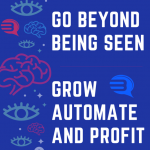The COVID-19 pandemic has adversely affected people and businesses across the world. In Australia alone, unemployment has increased from 5.2% to 7.5%, and rocking the foundation of entire business sectors.
In particular, traditional brick-and-mortar businesses have been left to manage costs with zero revenue.
Yet, despite the catastrophe, many businesses have found innovative ways to pivot, adjust their businesses models and not only survive but even thrive. Ecommerce, social media marketing, and search engine marketing have emerged as strong selling channels during the pandemic, keeping millions of businesses afloat.
Remember, a volatile economy offers just as many opportunities as it takes away. To take advantage of the shifting sands, businesses that are thriving all have one thing in common. Instead of waiting it out, they have been rethinking, adjusting, and above all acting FAST.
In fact, there is still plenty of opportunity for businesses to adjust. Research shows that 88% of global consumers found their favourite brand online during the pandemic, and they’ve decided to stick with them even after it’s all over.
That’s means you still have the opportunity to make sure that your products and services make it to the favourites list and get due attention from your prospects even if they can’t make it to your brick-and-mortar store.
In this article, we’ll see how you can incorporate e-commerce and online strategies into your business not just as a short-term stop-gap, but as a long term revenue stream.
Let’s get started!
Market Where Your Audience Is
Finding the right channels for marketing products has always been one of the biggest hurdles for business owners.
In the physical world, location is key. If your store is located at a busy avenue, you can expect considerable footfall. Similarly, when going digital, businesses have to market on sites where their target audience hangs out.
There are various opportunities for your business to expand and ignite profitability as long as you know where your prospective buyers are and how you should talk to them.
The following are a few ways to do this right:
Google SEO And Targeted PPC
SEO-driven blog posts and content marketing are great ways to attract attention to your site. However, these tactics can take a lot of time. And in these desperate times, speed is key.
What if I tell you there is another faster way of attracting loads of traffic to your site? One that does not involve social media?
It’s Paid Advertising! Many businesses have deployed targeted PPC (pay-per-click) advertising to attract relevant clients to their websites. With paid advertising, your business will be able to influence previously unreachable consumer segments.
One of the reasons that PPC promises such good ROI is because you can target specific keywords with high buyer intent. This can help improve your ad rank and also add to the quality score.
It can take months or years to have a page or blog post ranked so that it appears in the top half of page 1. Yet with just a few clicks (and some carefully researched keyword analysis), you can get in front of your competitors and appear at the top of the search results with paid placements.
Develop Your Digital Channels
This is a great time to go digital.
Online consumer spending has experienced 10 years of growth in just a few months due to the situation.

Your prospects are mostly confined to their homes, and browsing their social media pages, apps, and other websites: take advantage of this by being able to take sales right where the customers are already hanging out!
For example, if a restaurant business can no longer open their doors to dine-in customers, how do they ensure business continuity?
Customized, ready-to-cook meal kits!
Atlas owner and head chef, Charlie Carrington, came up with creative strategies to keep his customer-base intact. As lockdown was imposed in Australia, Carrington started selling meal kits to his customers via Youtube and Instagram, allowing potential diners to cook up their own feast at home. Customers received ingredients from the restaurant, followed by an online YouTube Masterclass from Carrington himself!
These innovations not only enable business owners to retain their current client base but also attract new customers.
This is the time to take your business beyond the trusty old SMS marketing. Contact them on social media channels that you think they use the most. Use emails, messenger bots, social media advertising, and post relevant media consistently so that customers know which businesses are trying to reach out to them.
You can also host live sessions on Instagram or YouTube with other industry leaders to attract more traffic. People love to see how their favourite businesses are adapting in these times. Try to be an inspiration for your consumers by relating to them through these channels.
Increase Customer Engagement
There is no doubt that these are challenging times for everyone. As the pandemic impinges on people’s financial prowess, customer experience has taken on a new meaning.
Many are still panicking about the increasing unemployment and financial stress and seek stability and reliable connections. Brand messaging needs to adjust accordingly, indicating “We Are Here For You” in the literal sense. Offering hope and relating through honest and meaningful story telling is what’s working best.
Here are some of the creative ways to connect with your customer base:
Engage On A Personal Level
Businesses should try to engage with their customers on a personal level and need to be reminded that their favourite brands are there for them. Send thoughtful automated emails to your customers who have signed up for your newsletter or email updates.
The software company, SEMrush, sends automated emails to its customers who haven’t visited their website, with the subject line “Are we still friends? Please say we are!” This has impact because it shows individual customers they are counted and remembered.
Creating a personalized relationship with your customers garners loyalty, regardless of their financial situation. Consumer loyalty is the holy grail for organizational success– a 5% increase in customer retention extrapolates to a 25% increase in revenue.
Re-Define Customer Experience
Consumer experience is one of the most defining differentiators when it comes to outperforming consumers. Increasing engagement and providing a seamless consumer experience is not an added advantage, but a necessity to succeed in these testing times and into the future.
Don’t just be there, be different.
Another way of increasing customer engagement is to introduce contact-less options for businesses that were operating physically. Let’s consider the restaurant industry. The emphasis on social distancing has put restaurants in a tough spot. While disinfecting tables and using hand-sanitizer is a good start to making people feel at ease wit the status quo, there are still further options to elminate contact such as the sharing of physical menus between customers and signing in on arrival.
Beyond Points has provided practical and innovative strategies that work in this industry , helping many including Puntino Trattoria. Puntino managed to stay operational throughout the first and second wave, quickly realising the benefit an online presence, reaching customers in a virtual world. Pre Covid tracking was not an consideration as it is now to keep the community safe, igniting new ideas and the importance to list build. Early adopters of a front-of-store QR code check in this innovative 100 seat Sydney trattoria remains one of the few restaurants in Australia to develop a successful take-away ordering system fully automated through Messenger. It’s contactless, effortless and their customers love it, coming back week after week with one-click repeat orders and exploring the new menu options.
Perhaps best of all, with Messenger being a much more personal channel than email, Puntino is building deeper relationships with its customers, long term loyalty, and opening the door to changing the service game in-house, if and when we ‘return to normal’.
Take Operations Virtual
Business leaders are fervently trying to make sure that the lockdown does not become a hindrance to business growth and continuity.
With the uncertainty induced by the pandemic, many businesses had to sideline their existing sales plans and quickly adopt new strategies. Education centres had to start delivering online training, corporate businesses had to transfer resources to online training, and travel companies resorted to giving their customers virtual tours of their sites.
Following are a few examples of how different industries adopted strategies to adjust to the ‘new’ market-place:
Work On Virtual Adaptability
Through a combination of 3D technology and Instagram marketing, even museums and art galleries have been able to showcase their art to a ‘virtual audience.’
The British Museum partnered with Google Arts and Culture to allow viewers to ‘view’ the artefacts and other memorabilia without leaving the comfort of their couches. Imagine the increase in web traffic and engagement!
Businesses can also adopt such innovative strategies to make sure they make up for the lack of physical footfall and convert them into a vibrant digital audience. This is particularly true for the education industry.
For parents, students, and teachers, the pandemic brought with it many uncertainties. As schools and colleges began to adjust to the new reality, a new way of teaching emerged: virtual online education. Several educational institutes, including Inspiring Minds Early Education Centre in Melbourne, transferred their resources online & developed ways to engage the kids through Zoom.
Quite surprisingly, industries that were disrupted the most from this pandemic have responded with increased innovation and smartness. With the tourism industry offering virtual tours, food industries offering an online food experience, and delivery services on the high – it highlights the importance of adopting quick marketing and business strategies to ensure sales and profits.
In Conclusion
Success stories from the past 6 months have shown that businesses who accept change for what it is and act fast to pivot their business models have been able to survive and even prosper through the most challenging year in living memory. While almost all industries are facing loss, dynamic organizations that realize the need for change are investing in going digital.
This begs the question, what can your business do to thrive? Inaction is simply not an option.
With a pinch of creativity, many solutions lie in effective online strategies, diversifying to digital marketing channels and targeting YOUR specific consumers in the channels they use.
From restaurants to early education centres; from corporate training to eCommerce, the Beyond Points team have helped dozens of businesses survive and thrive through 2020 – setting them up with sustainable online channels for the future. If you need help making adjustments like these in your business, don’t hesitate to strike up a conversation!

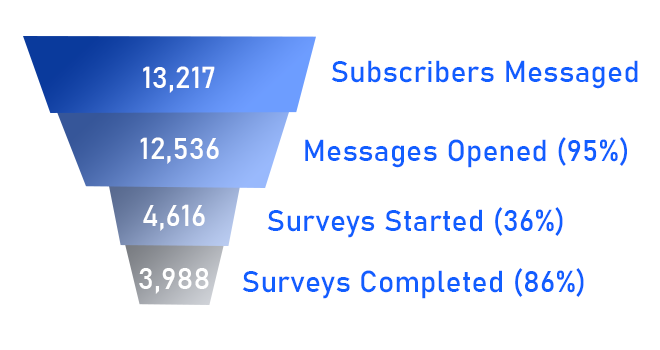

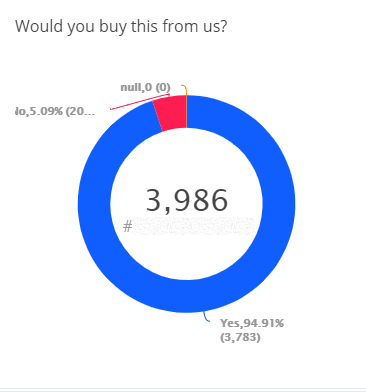
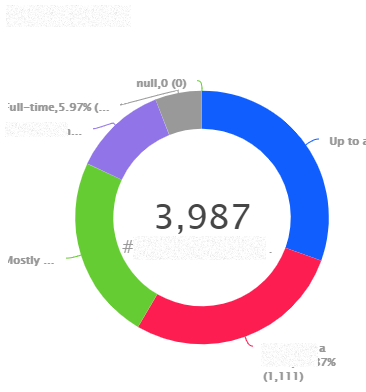

 Tip #1 – Start With Your Existing Customers/Fans
Tip #1 – Start With Your Existing Customers/Fans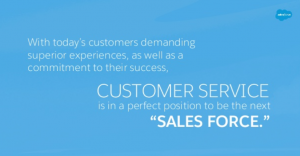


 Customer service agents are assigned a chat with a tracking to ensure the query has been handled. In the latest updates, the service agent is now able to re-engage the customer into a bot flow wherever relevant. Bot-to-human interactions like this provide rapid, helpful service & build trust with the customer ahead of a potential purchase.
Customer service agents are assigned a chat with a tracking to ensure the query has been handled. In the latest updates, the service agent is now able to re-engage the customer into a bot flow wherever relevant. Bot-to-human interactions like this provide rapid, helpful service & build trust with the customer ahead of a potential purchase.